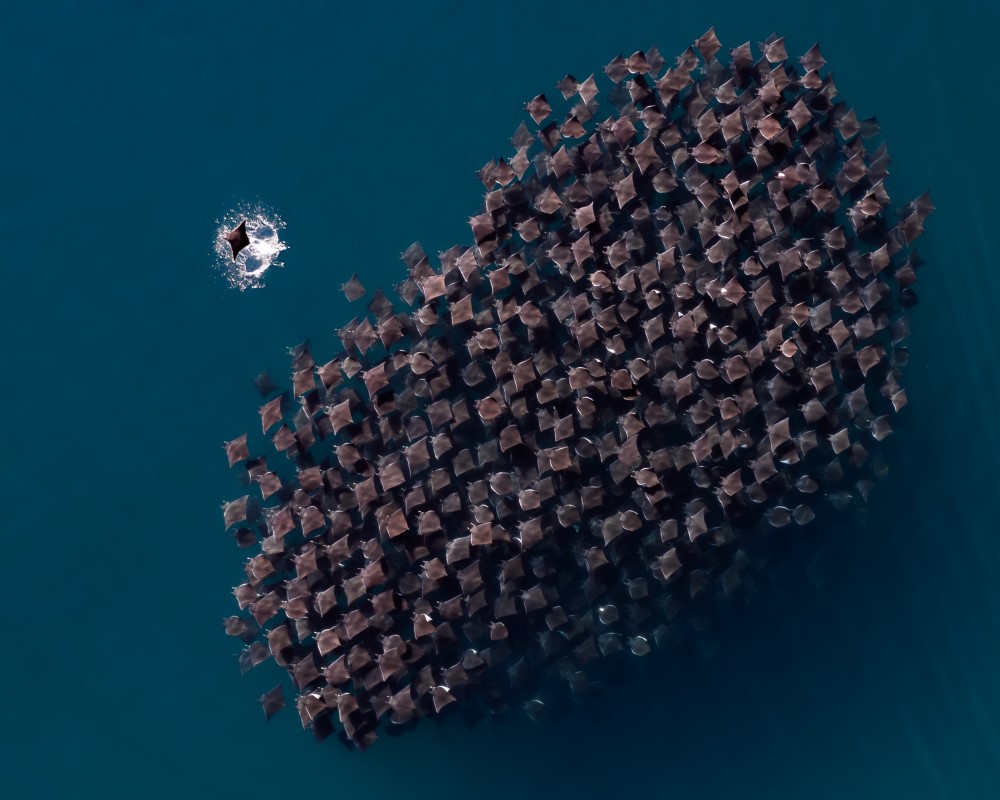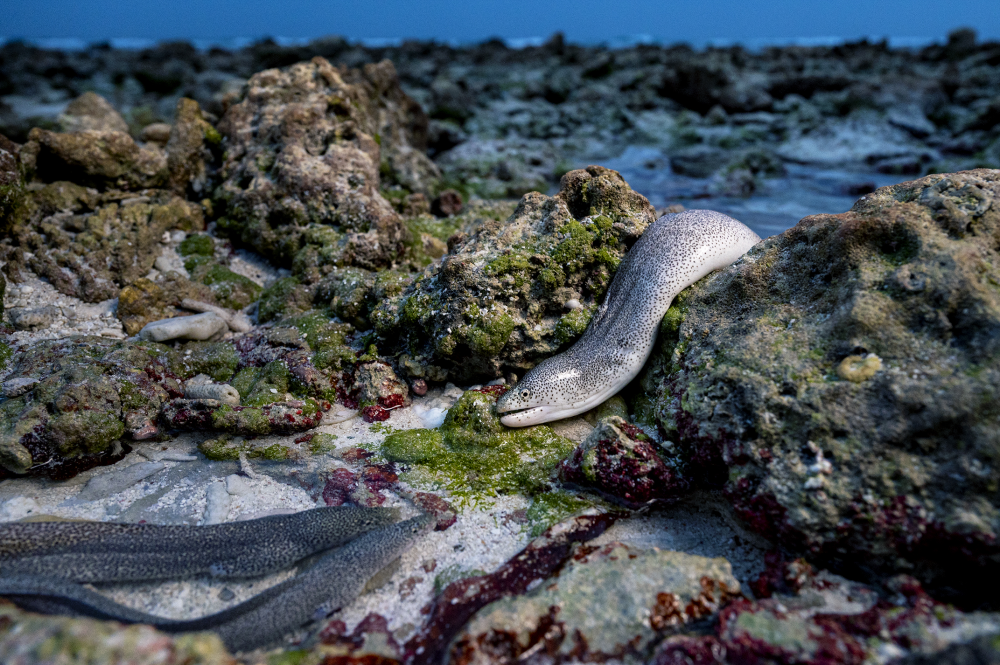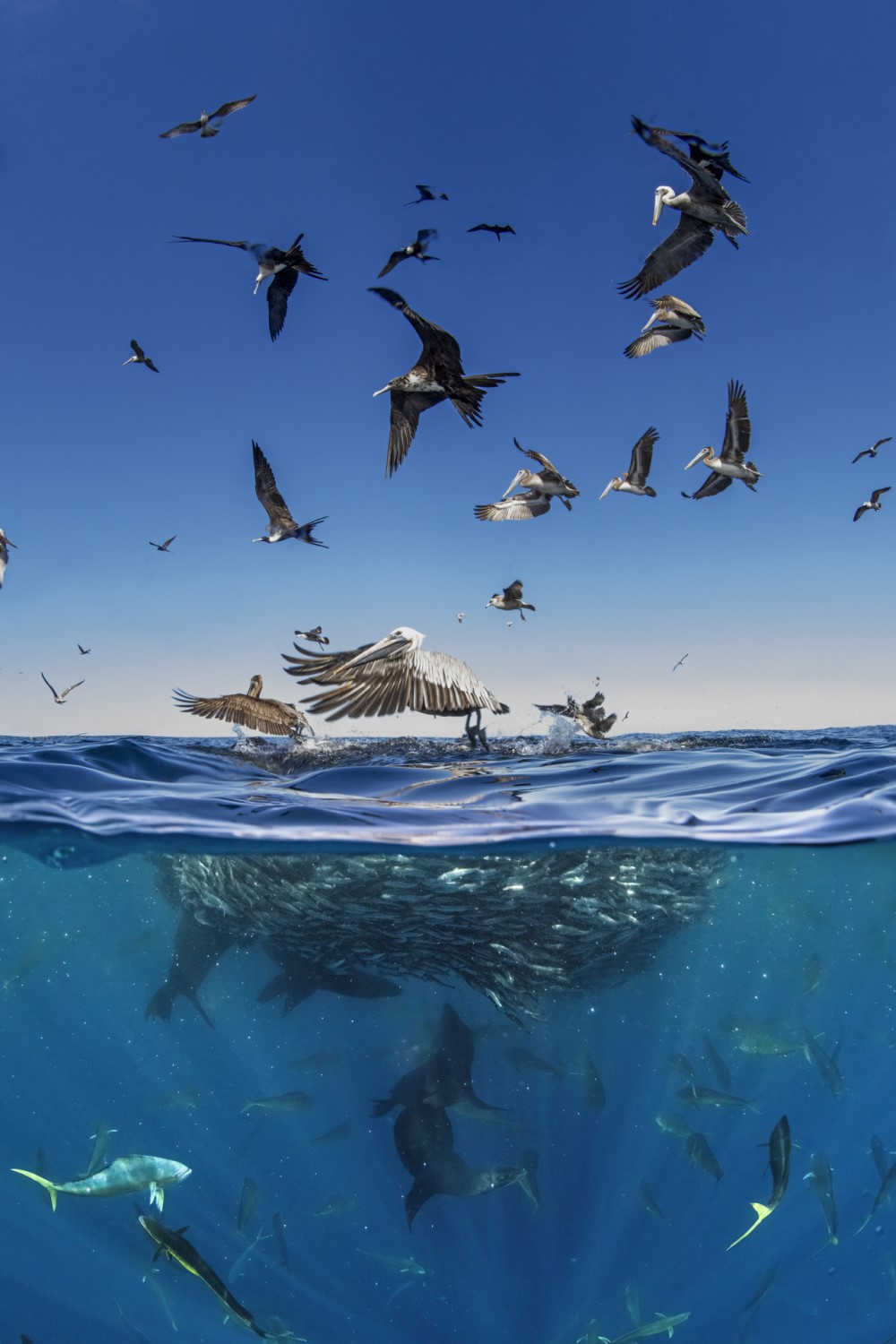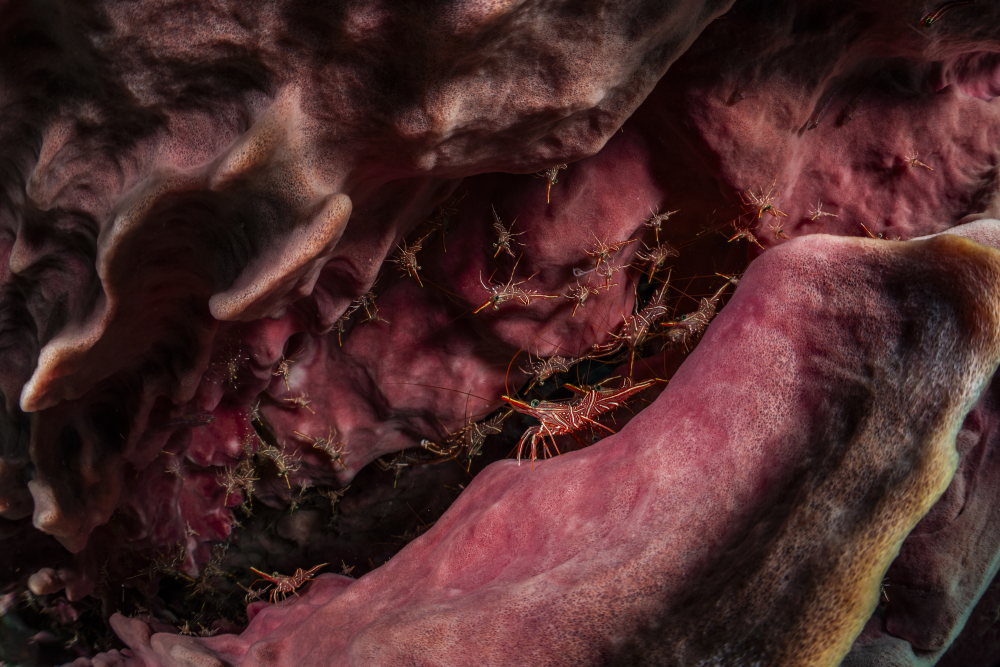Ocean Photographer Of The Year 2024 has announced the finalists for this year’s competition, whittled down from some 15,000 entries. Combining shots achieved with the aid of drones and capturing environments some of us might otherwise never see, the competition has brought the oceans to our screens, and picked up a few rather majestic animals along the way.
Dramatic wildlife encounters within the category this year include a baitball being devoured from air and sea, eels slithering over rocks at low tide like it’s no big deal, and an iridescent mahi mahi showing off a mouthful. The winners won’t be announced until September 12, but until then, let’s dive in and take a look at what we’re dealing with.

A fever of rays star in Laura Leusko’s entry.
Image credit: Laura Leusko, Ocean Photographer of the Year
Laura Leusko
Baja California Sur, Mexico
What do you call a group of rays? A fever! These mobula rays (Mobulidae sp.) were photographed from above by Leusko in Mexico. When the photographer’s drone inched closer, some rays started to jump out of the water, creating this spirited photo that looks as if the fever is following the leader.

Eels are more comfortable on land than we first realized.
Image credit: Shane Gross, Ocean Photographer of the Year
Shane Gross
D’Arros Island, Seychelles
A group of peppered moray eels (Gymnothorax pictus) look for food in a tidal pool at low tide. “Their ability to come completely out of the water is amazing and surprising,” said Gross in a release emailed to IFLScience. Eels are more talented on land than first thought, with the species Echidna nebulosa becoming the first fish documented being able to feed in a terrestrial environment back in 2021.

Photographing baitballs is no mean feat.
Image credit: Merche Llobera, Ocean Photographer of the Year
Merche Llobera
Baja California Sur, Mexico
In Llobera’s “The Hunt” we see pelicans diving from the sky in a well-coordinated dance to snatch a meal. The unique perspective of this shot gives us a look at what’s going on underwater, too, where mahi-mahi are darting around at top speed in pursuit of sardines, while sea lions also join the action. As wildlife photographer Bertie Gregory told IFLScience, winding up inside a baitball can be quite a dramatic experience, so achieving a shot like this is a real triumph.

Who’s for a hingebeak shrimp rave in a barrel sponge?
Image credit: Nataya Chonecadeedumrongkul, Ocean Photographer of the Year
Nataya Chonecadeedumrongkul
Koh Haa, Thailand
Get a load of these hingebeak shrimps (Rhynchocinetes durbanensis) in the hollow of a barrel sponge. These striking shrimp live in colonies and can put on quite a show. With vivid red and white stripes, they display dance-like movements as they sway back and forth, beaks pointed upwards. Now that’s our kind of party.
Ocean Photographer Of The Year 2024 is co-presented by Oceanographic and Blancpain. Keep an eye out for the winners, announced September 12, 2024.
Source Link: Godzilla Iguana, Ray Fever, And An Eel Sermon: Ocean Photographer Finalists 2024